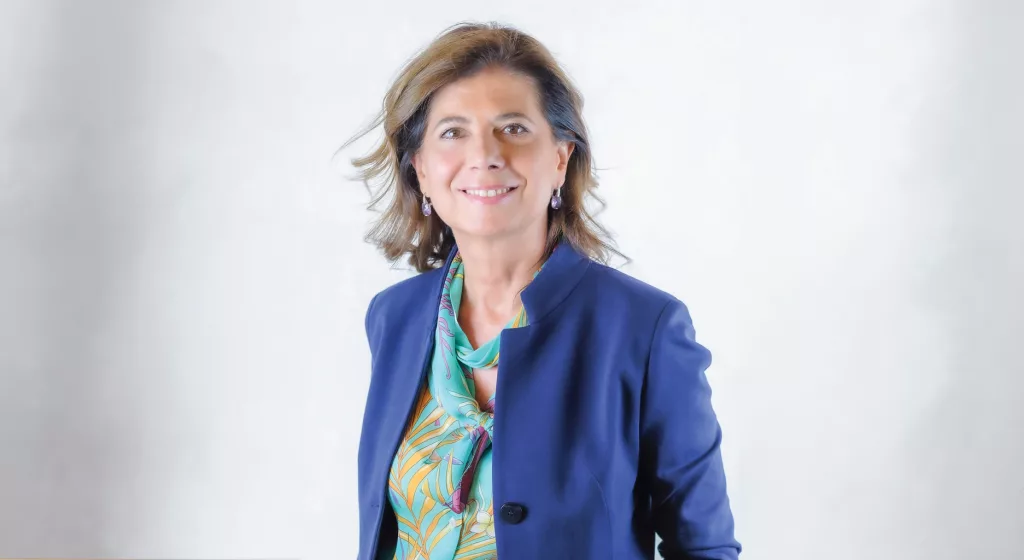Asian Development Bank: Optimising Capital Management to Meet Challenges of Asia-Pacific Development
Multilateral development banks are turning their attention to the bolder action needed to help those who suffer most in crises.
Capital management is a strategic priority for multilateral development banks (MDBs) — it underpins their lending capacity and development mandates.
In a world roiled by crisis, MDBs have a crucial role to play. As extreme climate events, war and food insecurity engulf countries and continents, MDBs have been called on to take bolder actions to provide the trillions of dollars needed to help the poor and vulnerable who are often the hardest hit.

By Roberta Casali Vice-President for Finance and Risk Management
Last year, an expert panel convened by the Group of Twenty (G20) called for reforms to boost lending capacity through capital management optimisation. A G20 report, The Triple Agenda: Strengthening MDBs, estimates that they should deliver $260bn of the $3tn needed annually for climate action and to help meet the UN’s Sustainable Development Goals (SDGs).
The Asian Development Bank (ADB) has heeded the call. After months of hard work and consultations, it approved a review of its Capital Adequacy Framework (CAF) in late September. The review unlocks $100bn in new funding over the next decade, increasing the bank’s annual new-commitments capacity by $10bn — an increase of about 40 percent to more than $36bn annually. The reforms are designed to maintain the AAA credit rating essential to the provision of low-cost funding, with long maturities to developing member countries.
ADB has enhanced its CAF, adjusting the prudential level of capitalisation to allow for greater risk, in aggregate, while strengthening other aspects of the framework. Under the new CAF, the same level of capital can support a larger balance sheet. This, in turn, will increase ADB’s lending capacity for developing member countries — at a time when resources are much needed.
To mitigate risk, the new CAF introduces a more granular risk-appetite statement, and enhances key pillars of its financial planning approach. The goal is to ensure that — as ADB increases its lending activity and fulfils its countercyclical role — the bank maintains its triple-A rating.
Capital Management Reforms
So: what, precisely, has changed?
ADB has enhanced aspects of risk appetite, risk measurement, and financial planning.
On risk appetite, in light of global circumstances and development challenges, ADB has adjusted its minimum level of capitalisation to boost lending capacity. At the same time, it is strengthening aspects of its risk-management framework to keep hold of its AAA rating. These aspects include an appetite for credit exposure to sovereign borrowers, and the introduction of a pre-agreed capital-management and recovery plan.
When it comes to risk measurement, the bank adopted a more transparent framework — while increasing the confidence level to align it with the AAA rating. The review updated the methodologies for measuring the capital required for credit risk in the operations portfolio, equity investments and currency risk, and the diversification benefit. The changing measurement will, in aggregate, lower the estimate of capital required for the material risks faced by ADB.
On financial planning, the new CAF creates an explicit countercyclical buffer to provide certainty on ADB’s capacity to increase lending in response to crises. It outlines a capital-management and recovery plan should the capital utilisation ratio reach certain trigger levels.
This will ensure that ADB takes early action to remain adequately capitalised, even in the face of severe financial stress.
Multiplier Effect
But MDB financing alone is not enough to meet global development challenges. It can generate billions of dollars — but trillions are needed for climate adaptation and mitigation, disaster resilience, and to attain the SDGs. Private capital mobilisation will play a critical role, through the expansion of the private sector’s involvement in development agenda.
It’s vital that ADB and other MDBs catalyse the move by leveraging their balance sheets to generate private investment at all stages of the project cycle. Policy development should be promoted upstream to create an enabling environment for private investment, bankable projects created midstream through advisory support, and private capital crowded-in downstream through appropriate structuring of development projects.
Not Yet Done
The new CAF lays the foundations to boost ADB’s lending capacity. There is a growing shareholder focus on ensuring that MDB capital is efficiently used to respond to the development challenges facing the world.
Co-ordination will be stepped-up with peer banks and credit rating agencies to maximise capital management efficiency. MDBs must continue to find ways to unlock more financing. The challenges are many, but they can be overcome by unity.
You may have an interest in also reading…
UN Says Bangladesh Labour Laws Fall Short of International Standards
The United Nations labour agency today on Monday 22nd July that amendments to the Bangladesh Labour Act “will hopefully prove
CFI.co Meets the CEO of XacBank: Bat-Ochir Dugersuren
Mongolia’s economy has been undergoing changes in recent years, and one of the challenges for its domestic banks is keeping
Corruption as the Scourge of Development: The Case of Venezuela
Corruption is the scourge of development. From outright stealing and cooking the books to kickbacks and price-fixing; corruption permeates some



















































































